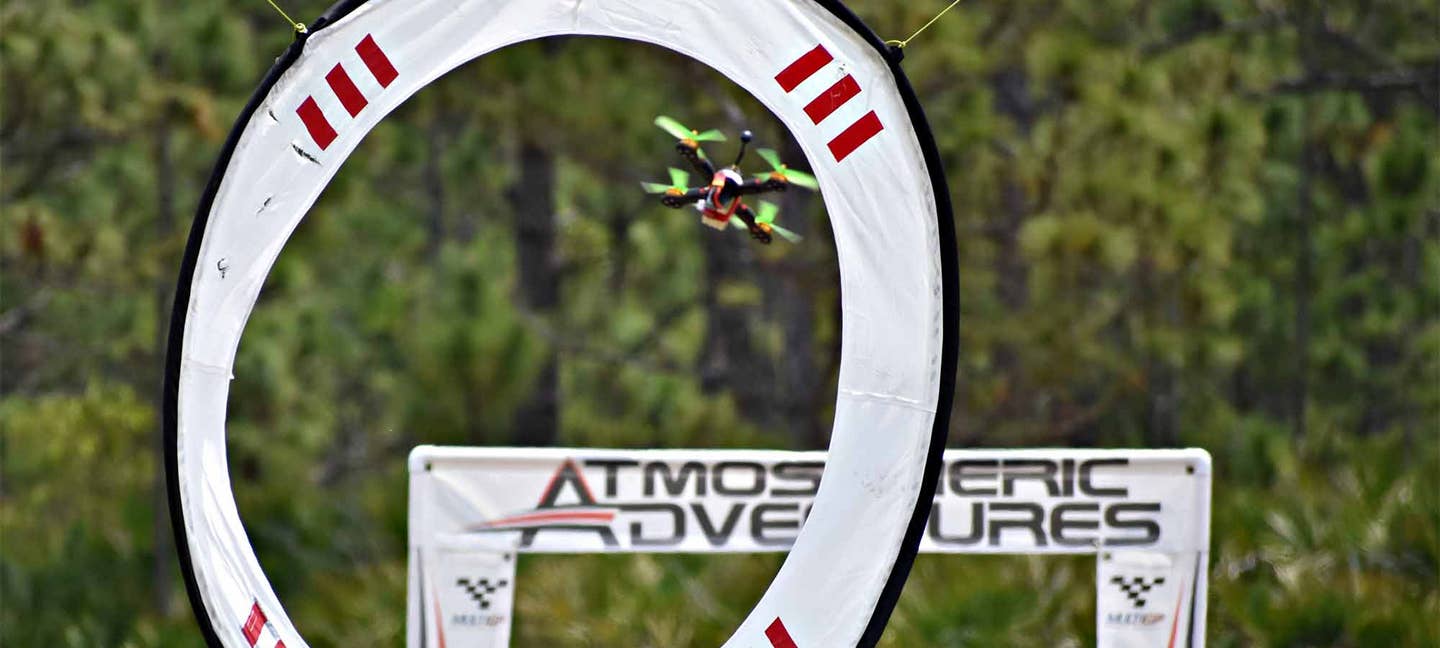
The Race Day Quads Mach 1 video transmitter RDQ
1) RDQ Mach 1 (9/10)
I’m going to get crucified for having this as my number one over the High Voltage TBS Unify Normal or Race editions, but it’s just a preference. I think they both put out very comparable video quality and would even pair well together in larger race heats. I would even give the TBS a slight nod at 200mw, but the Mach 1 has a better video quality at 25mw. The real advantage comes almost entirely in the Mach 1’s LED screen and large button.
It’s often joked that you have to take a class to learn how to operate the Unify’s menu system, pit mode and unlocking to even access anything over 25mw; the Mach 1 takes under 30 seconds to figure out. While the Unify does have Smart Audio, it’s not something I use or find necessary with proper building techniques and using intuitively designed frames.
By the way, I saw this thing get hit with a hammer Multi GP International Open Style and keep transmitting golden video, see it here.
Pros: Takes high voltage; big solder pads for wiring; UFL connector with solder pads around it; readable LED screen; large button; switches from 25-200-600
Cons: No smart audio (for me that's not a con); slightly thicker than the Unify; doesn't have filtered power out (not a deal breaker)
2) TBS Unify Race or Pro (High Voltage) (8/10)
Don’t talk to me about anything TBS unless it can handle 12V or more. So often now we run Flight controllers that hog the 5V along with the Receivers, and of course, it’s always nice to have the option of powering your camera off of 5V. However, most PDBs 1.5A-2A 5V BEC cannot handle all four. I’m still not sold on the Unify’s operating menu or the button that you navigate it with. It’s a tiny button and hard to tell if you’re clicking it or holding it down.
Pros: Skinny other than connector; UFL connector; switches from 25-200-higher for certain versions; smart audio capable; uses the same wiring connector as FX799t
Cons: Small button is hard to push; menu options hard to understand; can lock itself after being unlocked at times; pit mode over complicated
3) Eachine TX03 (7/10)
Yes, it’s cheap, but I’ve put two different models through rigorous testing and both have yet to fail, and that’s with the stock dipole. With the UFL connector you do have the option of getting the AXii with pigtail and UFL.
Pros: Super small and lightweight; switches from 25-50-200mw; UFL connector
Cons: Has filtered power out for the camera, but not enough to power cam when VTX is set to transmit at 200mw; durability in question because of size, but at its price you can buy 2 for the price of any of the others on the list, in some cases 3 or 4
4) Foxeer TM25 Switcher with pigtail (6.5/10)
Originally this VTX ranked much higher on my list, but the video quality is just not that of the TBS Unify or the Mach 1. And while it is easier to operate than the Unify, its method of mounting the pigtail to the VTX is inferior to the UFL connectors used by other VTXs on this list. The tiny solder pad the positive connection of the pigtail solders to is too small and often fails during flight after repairs. The Pigtail itself wears out and breaks too quickly.
Pros: It switches from 25-200-600mw, which means like many of the others on this list it's a great choice for many scenarios; big LED screen and good sized button to navigate menus; has filtered power out
Cons: Bad connection for pigtail; cheap pigtail; odd wiring harness; filtered power out is questionable after crashing; it's the largest VTX on the list
5) Immersion RC Tramp HV (6/10)
Look, I get it. You can change your video with a wand and it puts out great video. But the things overheat all the time and I don’t want to buy your wand. It’s a solid VTX, though, so it makes the list.
Pros: It can be controlled with a wand; it has changeable power outputs; UFL pigtail connector; high voltage; has filtered power for the camera
Cons: Overheats; has multiple connectors
Honorable Mention: Matek VTX
A release that did not get tested but is worth checking out is the Matek VTX. It has Smart Audio built in and is capable of adjusting its power output from 25-200-500mw, making it a triple threat for large competitions, local racing and solo freestyling.

Sign-up for newsletters & special offers!
Get the latest FLYING stories & special offers delivered directly to your inbox






